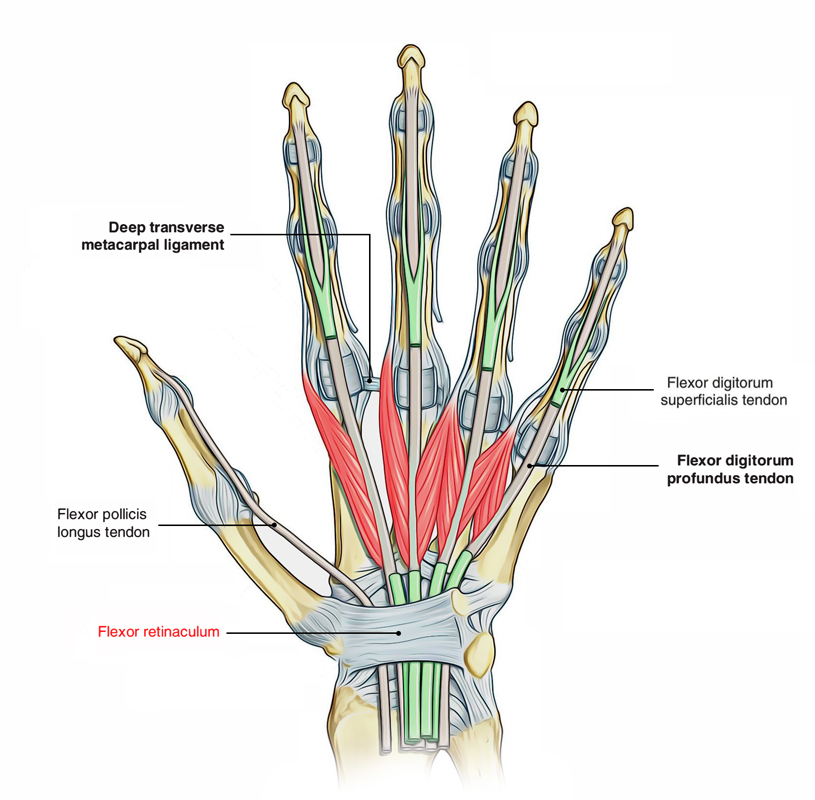
Flexor Retinaculum (Hand) Earth's Lab
The flexor retinaculum (also known as the transverse carpal ligament ) is a rectangular-shaped fibrous band located at the volar aspect of the hand, near the wrist. Gross anatomy The flexor retinaculum encloses and forms the roof of the carpal tunnel. The ulna aspect of the flexor retinaculum forms the floor of Guyon's canal.
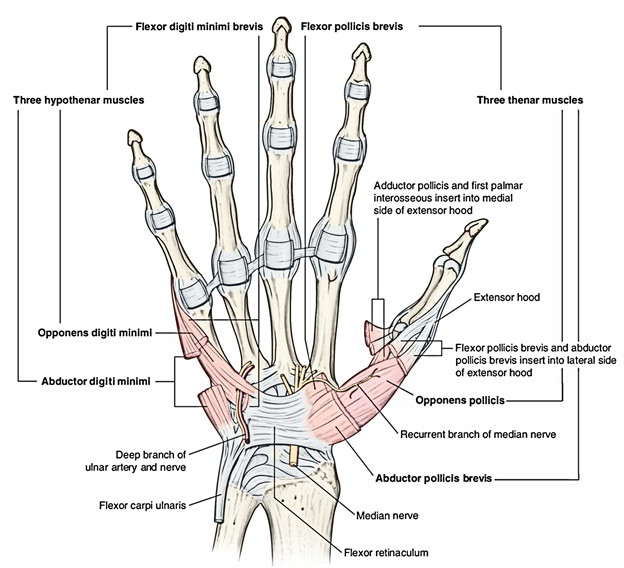
Flexor Retinaculum (Hand) Earth's Lab
The hamulus also serves as the attachment point for a number of different muscles and ligaments of the hand and forearm, including the flexor retinaculum. Articulations The hamate bone articulates with several adjacent bones: The proximal surface articulates with the lunate bone;

Pin em Musculoskeletal System
Anatomy of the flexor retinaculum For an accurate definition of the anatomic limits of the carpal tunnel, 26 cadaver upper extremities were studied by gross (lo), histologic (3), and radiographic (13) methods.. ture is the transverse carpal ligament.4-6 Flexor reti- nuculum and transverse carpal ligament are considered

Superior Extensor Retinaculum Anatomy, Musculoskeletal system, Orthopedic surgery
Retinaculum. A retinaculum refers to any region on the body in which tendon groups from different muscles pass under one connective tissue band. Wrist retinacula include the flexor and the.

View of the wrist showing the flexor retinaculum at the wrist and the
Flexor retinaculum is a strong fibrous band which bridges the anterior concavity of the carpal bones thus converts it into a tunnel, the carpal tunnel [1]. Attachments Medially, To the pisiform bone To the hook of the hamate Laterally, To the tubercle of the scaphoid To the crest of the trapezium [1]
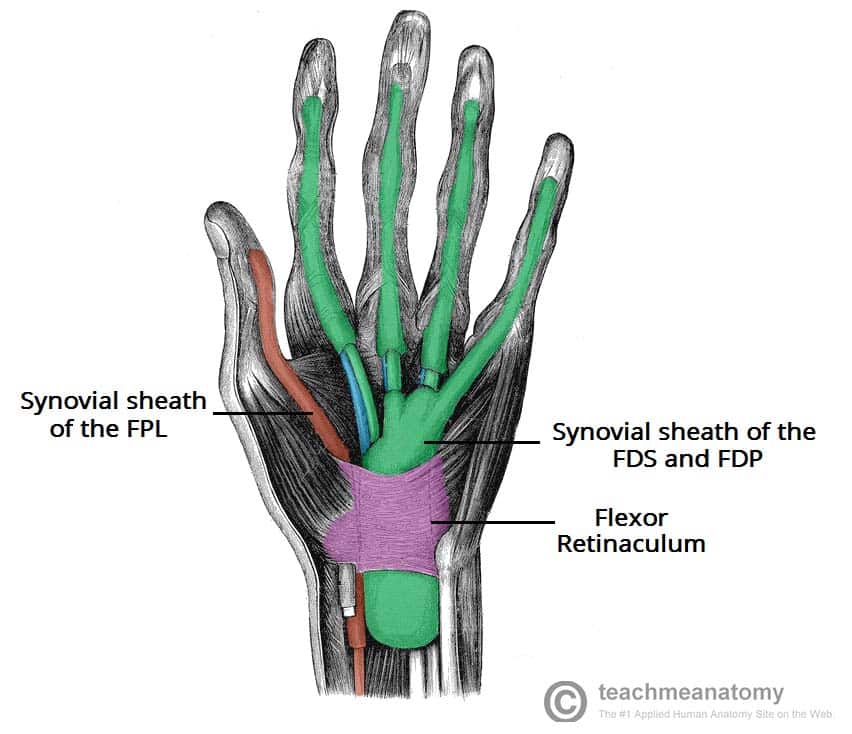
The Carpal Tunnel Borders Contents TeachMeAnatomy
Definition The TCL is the middle portion of the flexor retinaculum (FR). 1 The proximal portion of the FR is the distal continuation of the antebrachial fascia. 2 The transition from the antebrachial fascia to the TCL can be identified based on gross inspection, predominantly marked by the abrupt increase in thickness.

15 The Forearm Fascia and Retinacula Musculoskeletal Key
The flexor tendon sheaths of the remaining three fingers are separate. The radial bursa extends for the entire length of the flexor pollicis longus tendon and ends just proximal to the flexor retinaculum. The radial & ulnar bursa communicate at the level of the wrist joint in almost 50% of individuals. Dorsal carpal tendinous sheaths

The flexor retinaculum in the carpal tunnel consists of three segments... Download Scientific
The roof of the carpal tunnel is formed by the flexor retinaculum (also known as transverse carpal ligament), a thick connective tissue ligament. This ligament bridges the space between the medial and lateral ends of the carpal arch, converting the arch into a tunnel. Contents Tendons of flexor digitorum profundus muscle

Flexor Retinaculum of Hand Anatomy l Surface marking l Structures Passing l Superficial l Deep
Carpal tunnel syndrome (CTS) is the most common entrapment neuropathy (condition in which a nerve gets pinched) and results from compression of the median nerve in the wrist region. The median nerve provides sensation to the palm side of the thumb, index, middle, and part of the ring finger, and it supplies power to most of the thumb muscles.
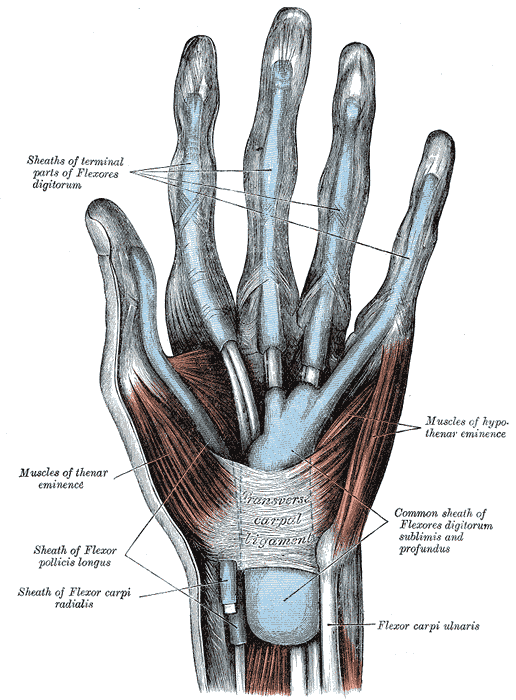
Flexor retinaculum Physiopedia
The flexor retinaculum of the foot is a strong fibrous band that covers the tendons of the muscles that flex the foot such as walking on the toes like a ballerina.

View of the wrist showing the flexor retinaculum at the wrist and the carpal tunnel where the
Flexor Retinaculum Thick connective tissue which forms the roof of the carpal tunnel. Turns the carpal arch into the carpal tunnel by bridging the space between the medial and lateral parts of the arch. Spans between the hook of hamate and pisiform (medially) to the scaphoid and trapezium (laterally).
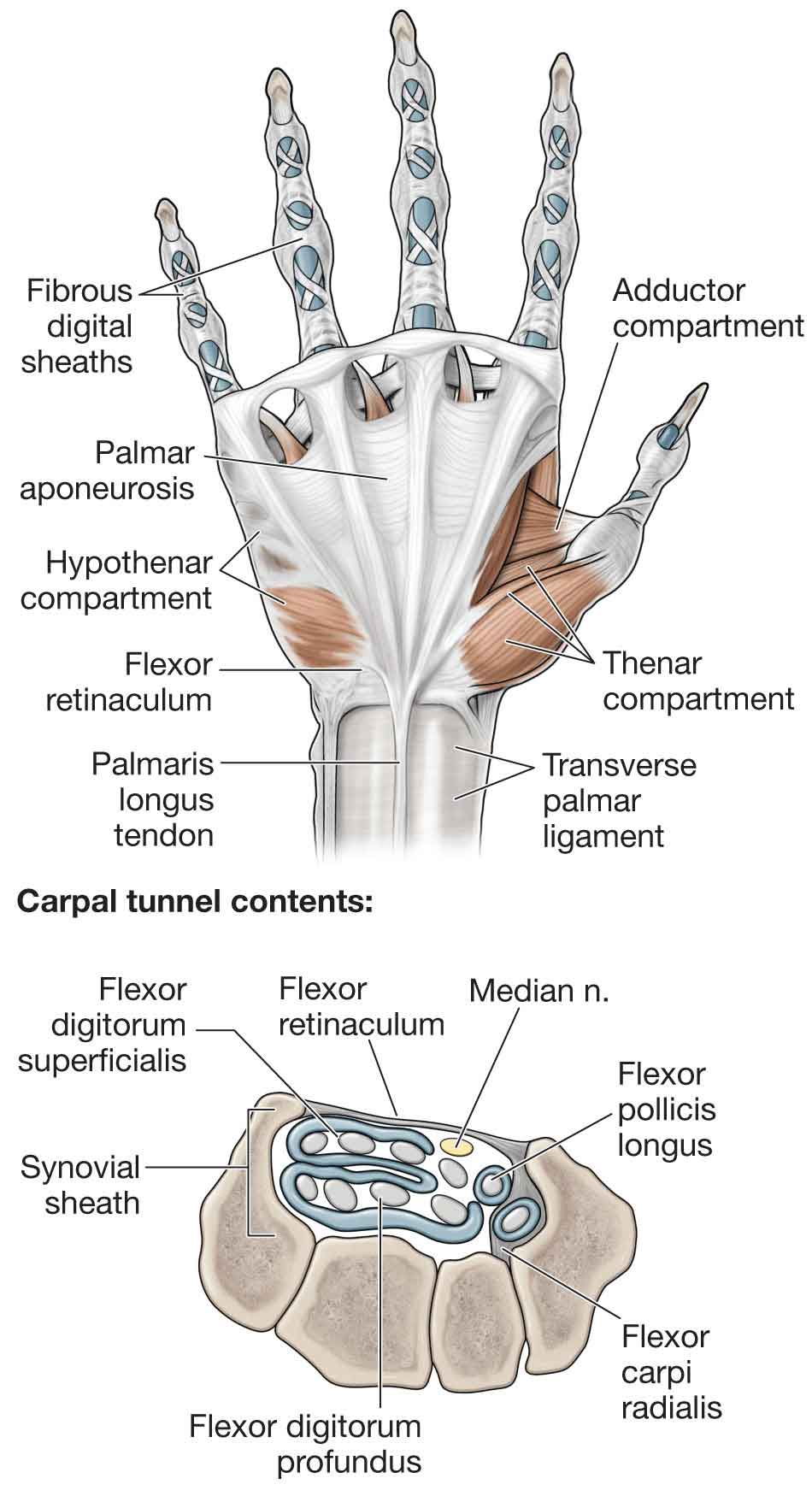
The Forearm, Wrist, and Hand Musculoskeletal Key
The Palmar carpal ligament (PCL) is a distinct component of the antebrachial fascia. The distal part and the true covering of the carpal tunnel is the flexor retinaculum. There is an area in the distal part of the flexor retinaculum that consists of crisscrossing of muscle aponeurosis of the thenar and hypothenar muscles ( Fig. 18.9a,b ).
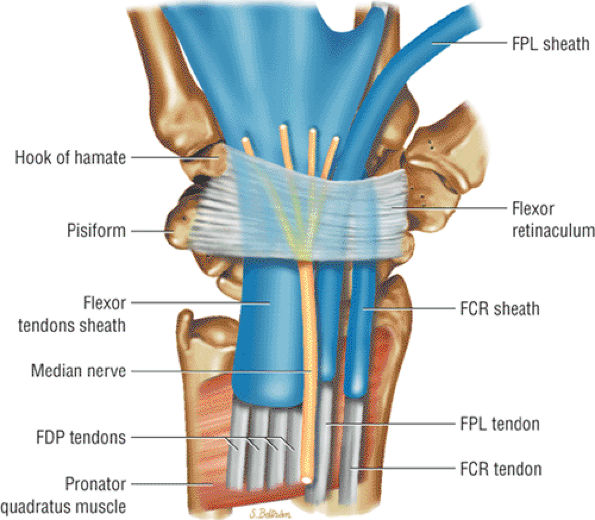
The Wrist and Hand TeachMe Orthopedics
1/4 Synonyms: none Intercarpal joints are all classified as synovial plane joints, meaning that the articular surfaces are functionally considered as nearly flat and lined with fibrocartilage. The joints are enclosed by the thin fibrous capsules whose internal surfaces are lined by the synovial membranes.

The flexor retinaculum of Hand Gross anatomy , Attachments and Relations YouTube
The flexor retinaculum at the ankle is formed by reinforcement of the deep fascia of the leg by transverse collagen bundles and functions to prevent 'bowstringing' of tendons as they pass the tibiotalar joint. It forms the roof of the tarsal tunnel 1-2. Attachments medial malleolus of the tibia medial process of the calcaneus plantar aponeurosis

Strained Flexor Retinaculum of the Foot
The flexor retinaculum is a fibrous connective tissue band that forms the anterior roof of the carpal tunnel (see Image. Flexor Retinaculum of the Wrist). Many experts consider the flexor retinaculum synonymous with the transverse carpal and annular ligaments.
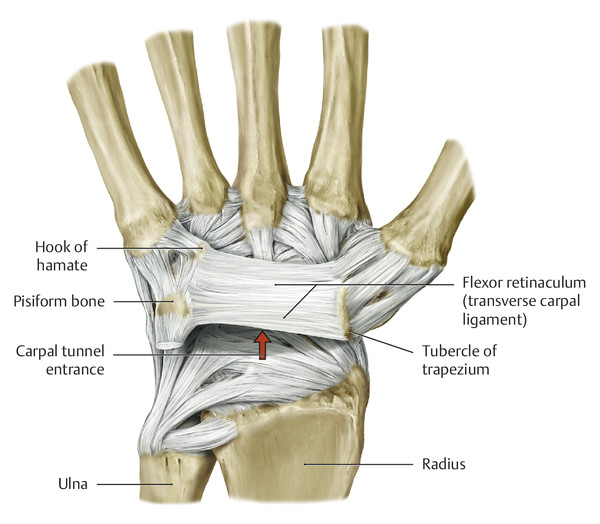
Anatomy and Functional Anatomy of the Hand Plastic Surgery Key
Definition The flexor retinaculum (transverse carpal ligament; anterior annular ligament) is a strong, fibrous band, which arches over the carpus, converting the deep groove on the front of the carpal bones into a tunnel, through which the Flexor tendons of the digits and the median nerve pass.